Continuing the ongoing series of interviews with creative artists working on various aspects of movie and TV productions, it is my pleasure to welcome Julie Berghoff. In this interview Julie talks about her ongoing work on commercials, the beginning of her involvement with feature productions as the horror genre starting taking off in early 2000’s, creative collaborations across multiple departments, what makes people stay in the field and what makes people leave, and the evolving landscape of storytelling across various screens around is. The second half of the interview is about her work on “The Last Witch Hunter”, bringing together physical sets and digital extensions, working with live plants, sculpting the impressive sets for the movie, and extending the continuity of sets through post-production via collaboration with the visual effects department.
Kirill: Tell us about yourself and how you started in the field.
Julie: I’m Julie Berghoff and I’m a production designer for film, TV, commercials and music videos. I’m from Chicago IL and I went to the Art Institute of Chicago. I was always really interested in fine art, drawing and building. I completed a sculpting and a fashion degree at the Art Institute of Chicago. From 1994-2000, I worked for a graphics/model shop in Chicago called Kaleidoscope Imaging.
We worked mostly in table top which is directly connected with shooting food products. I specialized in sculpting oversized models. Some of my favorites were the oversized mini-wheats and Snickers bars and things of that nature. We’re talking about a 2-foot Snickers bar that you crack open with the real product inside. Around 1996, I did a stop-motion spot for Coca Cola, and I built all these models that moved and danced, and I fell in love with stop-motion and decided that I wanted to pursue more stop motion. Which brought me out to Portland Oregon, where I worked at Will Vinton Studios for 1.5 years. I did various positions on a Fox show called “The PJs”. It was a hilarious stop motion show about the project, starring Eddie Murphy’s voice.
Around 2002, I moved from Portland to Los Angeles and started working on commercials. The speed and accuracy of working on commercials was nerve racking. They were very demanding and definitely kept you on your toes. You have to work really fast, you have to be on the spot when you go on scouts with the director and they ask you about your vision, and you have sometimes to draw and build things in days.
Commercials really taught me how to be efficient, smart and fast with fabrication and concept ideas, but there was really no narrative aspect to it. You want to be inspired by your work and the film industry as a whole works incredibly hard. A 60-80 hour week is somewhat the norm. When you’re going to dedicate so much of your energy of you life to something. It’s important to be passionate about it and figure out how to keep the passion. I really take my time in choosing my projects, and I need to feel completely energized by it which is the tell-tale sign.
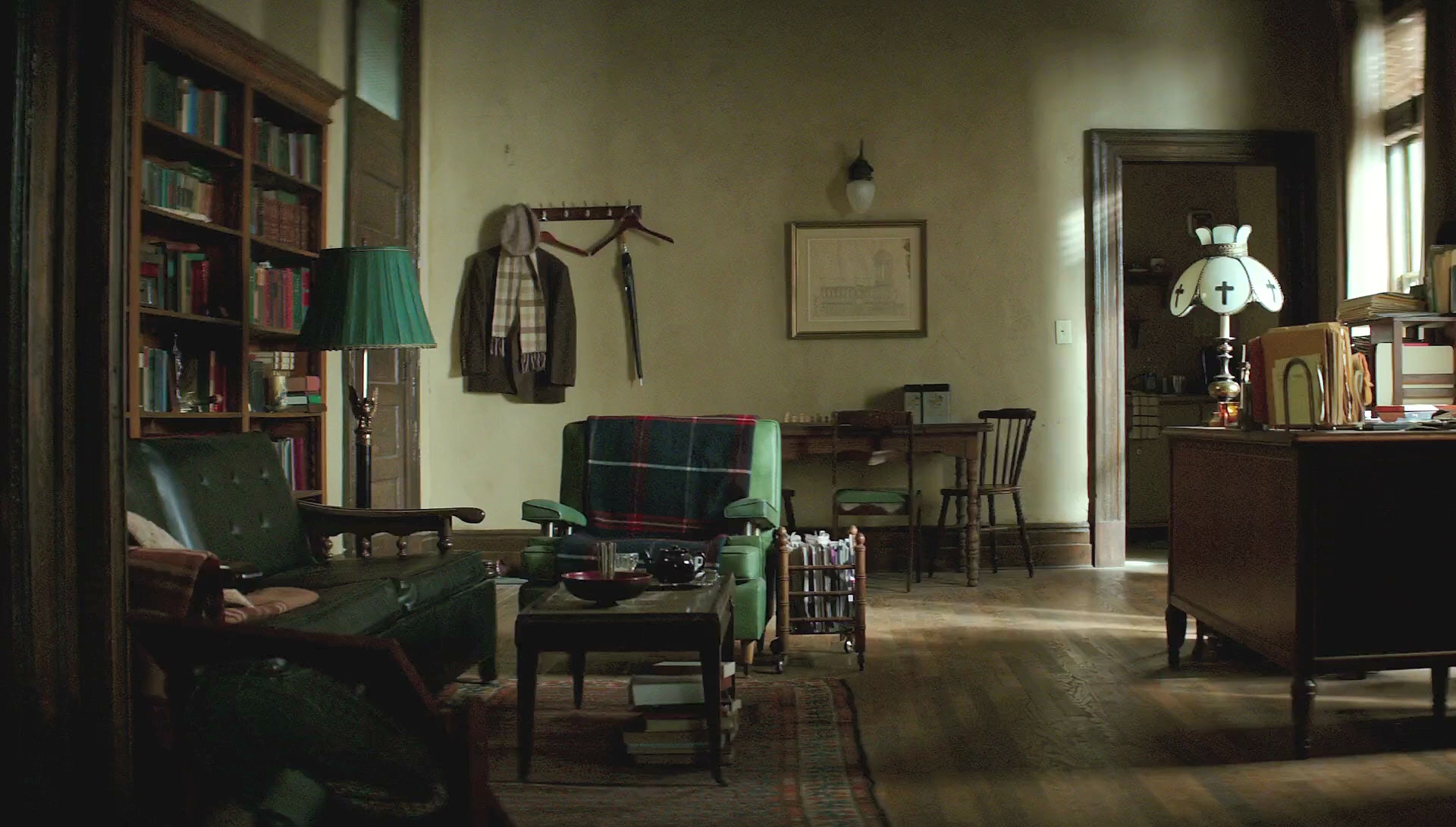
Kirill: How did the field of commercials evolve for you over the last 20 or so years? You’ve seen the advent of high-definition televisions, and explosion of video on web and mobile devices and micro-channels everywhere. Is anything different for you these days?
Julie: I just did a commercial last week, and I have to say that the client is really the king now. It was a mid-range commercial, and maybe on the higher end the directors have more of a voice, but the clients really care so much specifically about their product, and that’s what they want to focus on. And then, time permitting, you can do some fun narrative or something interesting, but it doesn’t mean that it’s going to make the cut.
I still find it to be a great learning platform for people starting off, much better than reality TV shows which I’ve never done. It teaches you discipline of fast film making. Working with a director, scout, producer on all the different platforms of how to make a commercial.
The more you work with people, the more shorthand you have. It’s the same as working with the same director. You know what they like, what they don’t like, how they tell a story, how they move the camera, and sometimes even what furniture style they like. Working continuously with the same people is extremely helpful.
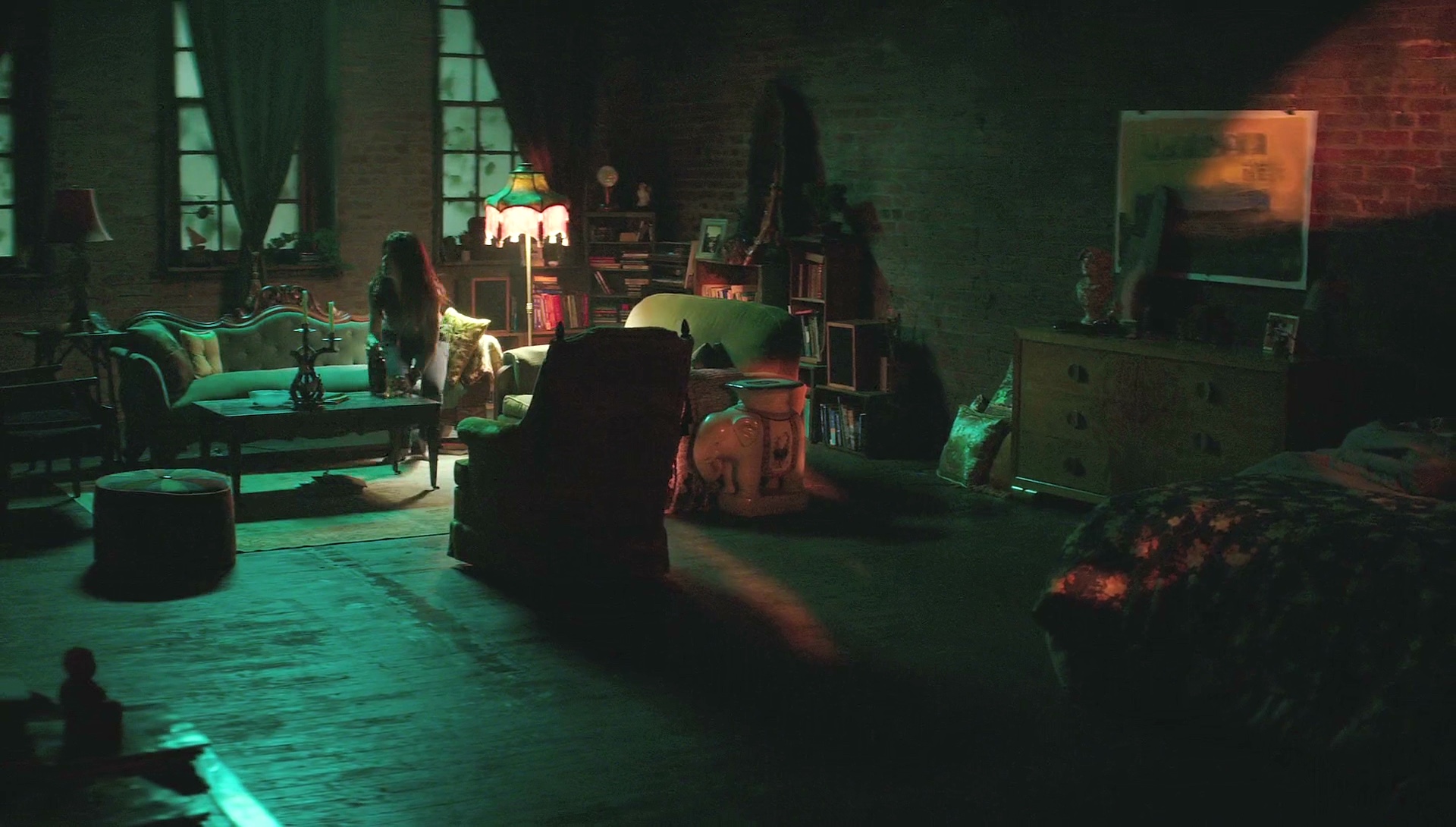
Continue reading »
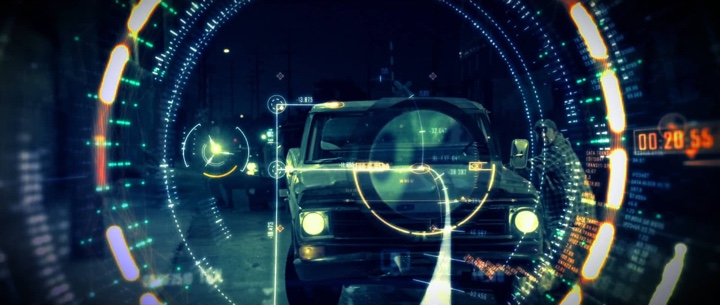
A few weeks ago I’ve had a wonderful opportunity to chat with Khoi Vinh about fantasy user interfaces. Khoi asked really great questions, bringing in his experience as a designer and his passion for film. We talked about the overriding directive to support the story, the fantasy bleeding into the reality and, in turn, being shaped by the advances in the world of real-life technology, trying to evaluate how well those interfaces are done, and what might be happening when virtual reality becomes a form of cinematic storytelling.
Here’s the bit where I talk about screens as plot devices that might not seem very believable:
I don’t think that the question here is about how plausible the screens are, but rather how plausible the technology that those screens manifest is. So you’d be talking about the AI engine that is J.A.R.V.I.S. in “Iron Man,” or the AI engine that is manifested as Samantha in “Her,” or being able to track the bad guys via thermal scans in a 3D rotating wireframe of a building in any number of action movies, or even the infamous zoom-rotate-enhance sequences in low-budget procedural crime drama on television. The interface bits are just the manifestation of the technology behind the screens. Are we close to wide consumer availability of J.A.R.V.I.S.-like software? There are certainly a lot of companies working on that.
When we look at the devices around us and see all the annoying bits, and then see those annoying bits not being there in a feature film, that is quite believable in my opinion. So something like not needing to charge your phone every evening or getting a strong mobile signal as you’re driving on a deserted road gets a pass. When we look at the devices around us, and see those capabilities pushed just a few steps beyond the edge of what we see right now, that is quite believable as well. Especially with the recent revelations on the state-level surveillance programs, I as a viewer am not surprised to see similar technology taken a couple steps forward in Bond, Bourne or other similar spy-action thrillers.
The full conversation is over at Khoi’s great Subtraction.com. And as always, the ongoing series of interviews I do with designers working on screen graphics and user interfaces for film and TV is just one click away.
Continuing the ongoing series of interviews with creative artists working on various aspects of movie and TV productions, it is my pleasure to welcome Amanda McArthur. As a production designer, she splits her time between the worlds of film, theatre and commercials. In this interview Amanda talks about starting out in the industry and how things evolved over the years, differences between doing production design for film and stage, various aspects of working on commercials, what makes people stay in the field and what makes people leave. The second half of the interview is about her work on “Miss You Already”, a touching story about lifelong friendship between two women played by Toni Collette and Drew Barrymore, and how that friendship is put to the test as one falls ill and the other starts a family.
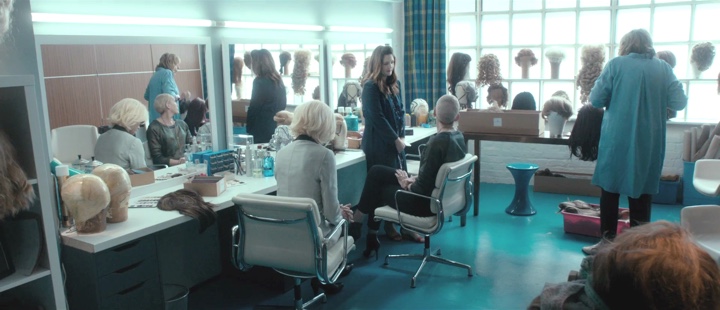
Kirill: Please tell us about yourself and your path so far.
Amanda: I grew up in New Zealand, the daughter of a sculptor and an accountant. And I figure I am something in between. My job involves creating spaces in three dimensions and bringing it in on budget. My mother was a creative force and our home and garden were always full of life, beauty and wonder. Creations would be rising out of lumps of clay, wood or resin on our kitchen bench and finding their way out into the world. My Dad had a workshop under the house. So I guess I have always been surrounded by possibilities.
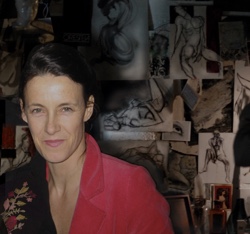 I grew up partly in the country with three boys having adventures, there was always a mystery to explore, an old abandoned house, a Victorian rubbish dump filled with treasure, a maori burial site, making rafts, eeling and finding the best swimming holes in the river.
I grew up partly in the country with three boys having adventures, there was always a mystery to explore, an old abandoned house, a Victorian rubbish dump filled with treasure, a maori burial site, making rafts, eeling and finding the best swimming holes in the river.
I read a lot and this fed into these adventures, we would create our own stories and legends. So I guess it was inevitable I would be attracted to bringing stories to life. Collaborating with a director and finding a visual language for a story is a thrilling thing.
Kirill: What drew you into the industry, and how those expectations compared to the reality of being in the industry?
Amanda: I remember as a child sitting in a cool, dark cinema on a hot day watching a re-run of “Chitty, Chitty, Bang, Bang” and being captivated – the real world on the screen but magical. But my teachers at school were pushing me to be a scientist. I think the movie that changed it all for me was “Blade Runner” – the possibility of another world so beautifully realized blew me away. You always have pictures swirling in your head when you read any story and this made me realize that those pictures can become tangible. I knew what I wanted to do.
There was no training for film design in New Zealand at the time so I trained as an agency art director. A holiday job in a theatre troupe putting on a big summer spectacular was the springboard I had been looking for. And I threw myself into fringe and then mainstream theatre with abandon and did well. Downstage theatre took me on as a trainee and a new post-graduate course at University in theatre design followed. I was the guinea pig, the only student, having my lectures alone.
It was a very exciting time, lots of great new writing. In the theatre you do costume as well. It was a time of experimentation, and learning lots of different skills. I find now that all the best crew I have, have come up through the theatre. It’s incredibly hard work with a few moments of glamour and I find that theatre people have a strong imaginative backbone.
The only difficult thing was being so young and a girl. Sexism in the set building trade at that time was rife and I really had to earn my right of passage with the old construction managers. I won a few awards and then got a grant from the NZ and British arts councils to travel and study in England, at the National theatre and the Royal exchange in Manchester.
I still really wanted to get into TV and film so I knocked on lots of doors and ended up at Granada TV and then the BBC. A student film I designed at the NFTS (set in an imaginary world) got me into commercials because a director wanted that look.
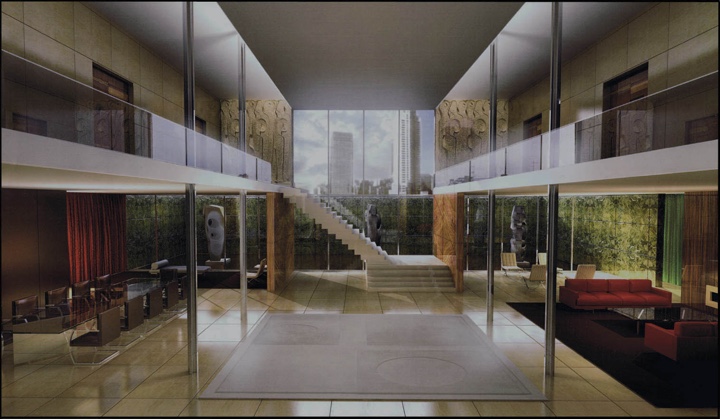
Visual sketch for the apartment in “Piccadilly Jim”, courtesy of Amanda McArthur.
Continue reading »
Around 2005 I was really into the whole field of non-photorealistic rendering (NPR). I’ve pored over dozens of research papers and spent months on implementing some of the basic building blocks and combining them together to recreate the results from a couple of those papers. It even got as far as submitting a talk proposal to SIGGRAPH of that year. I thought I had an interesting approach. All of the reviewers strongly disagreed.
Edge detection was one of the building blocks that I kept on thinking about long after that rejection. A bit later I started working on a completely different project – exploring genetic algorithms. The idea there is that instead of coming up with an algorithm that correctly solves a problem, you randomly mutate parts of the algorithm generation that you currently have and evaluate the performance of each mutation. The hope is that eventually these random modifications “find” a path towards the optimal solution that works for your input space. You might not understand exactly what’s going on, but as long as it gives you the right answers, that part might not be that important.
My homegrown implementation was to come up a set of computation primitives – basic arithmetic operations, a conditional and a loop – and let it work on “solving” rather simple equations. It was rather slow as I was basically doing my custom completely unoptimized VM on top of Java’s own VM. As I started spending less time working on it and more time just lazily thinking about it, I kept on bouncing two things in my head. One was to switch my genetic engine to work at the level of JVM bytecode operations. Instead of having a double-decker of VMs, the genetic modifications and recombinations would be done at the bytecode level, and then fed directly to the JVM. The second idea was to switch to doing something a bit more interesting – putting that genetic engine to work on image edge detection.
I’ve spent months thinking about various aspects of what could be done with such an engine, and how novel the entire thing would be when it’s all done. But I never got around to actually doing it.
Around 2007 as I was in the middle of working on a bunch of libraries for Swing (a few extra components, an animation module and a look-and-feel library), I fell in love with the idea outlined by some of the presentations around Windows Vista. I wrote about that in more detail a few years ago, but the core of it is rather simple – instead of drawing each UI widget as its own thing, you create a 3D mesh model of the entire UI, throw in a few lights and then hand it over to the rendering engine to draw the whole window.
If you have two buttons side by side, with just enough mesh detail and reflection on texture you can have buttons reflecting each other. You can mirror and distort the mouse cursor as it moves over the widget plane. As the button is clicked, you distort the mesh at the exact spot of the click and then bounce it back. Lollipop ripples, anyone?
I’ve spent months thinking about various aspects of what could be done with such an engine, and how novel the entire thing would be when it’s all done. But I never got around to actually doing it.
Around 2010 as I wound up all my Swing projects, I decided that it would be a good experience for me to dip my toes into the world of Javascript. So I took the Trident animation library that was written in Java (with hooks into Swing and SWT) and ported it to Javascript. It was actually my most-starred project on Github after it hit a couple of minor blogs.
I don’t know how things in the JS land are looking now, but back in 2010 I wanted a bit more from the language, especially around partitioning functionality into classes. Prototype-based inheritance was there, but it was quite inadequate for what I wanted. It probably was my fault, as I kept on going against the grain of the language. As the initial excitement started wearing down, I considered where I wanted to take those efforts. In my head I kept on going back to the demos I did for Trident JS, and particularly the Canvas object that was at the center of all of them.
Back in the Swing days my two main projects were the look-and-feel library (Substance) and a suite of UI components that had the Office ribbon and all the supporting infrastructure around them (Flamingo). So as I started spending less time working on the code and more time just lazily thinking about it, I thought about writing a UI toolkit that would combine everything that I’ve worked on in Swing and bring it to Javascript. It would have all the basic UI widgets – buttons, checkboxes, sliders, etc. It would all be skinnable, porting over the code that I already had in place in Substance. Everything would have animations from the port of Trident. I was already familiar with the complexity of custom event handling (keyboard / mouse) for the ribbon component in Flamingo. And it would all be implemented at the level of the global Canvas object that would host the entire UI.
I’ve spent months thinking about various aspects of what could be done with such an engine, and how novel the entire thing would be when it’s all done. But I never got around to actually doing it. Flipboard did that five years later. The web community wasn’t very pleased about it.
Some say that ideas are cheap. I wouldn’t go as far as that, even though I might have said it a few times in the past. I’d say that there are certainly brilliant ideas, and the people behind them deserve the full credit. But only when those ideas are put into reality. Only when you put in the time and the effort into making those ideas actually happen. Don’t tell me what you’re thinking about. Show me what you did with it. For now I’m zero for three on my grand ones.
![]()
![]()